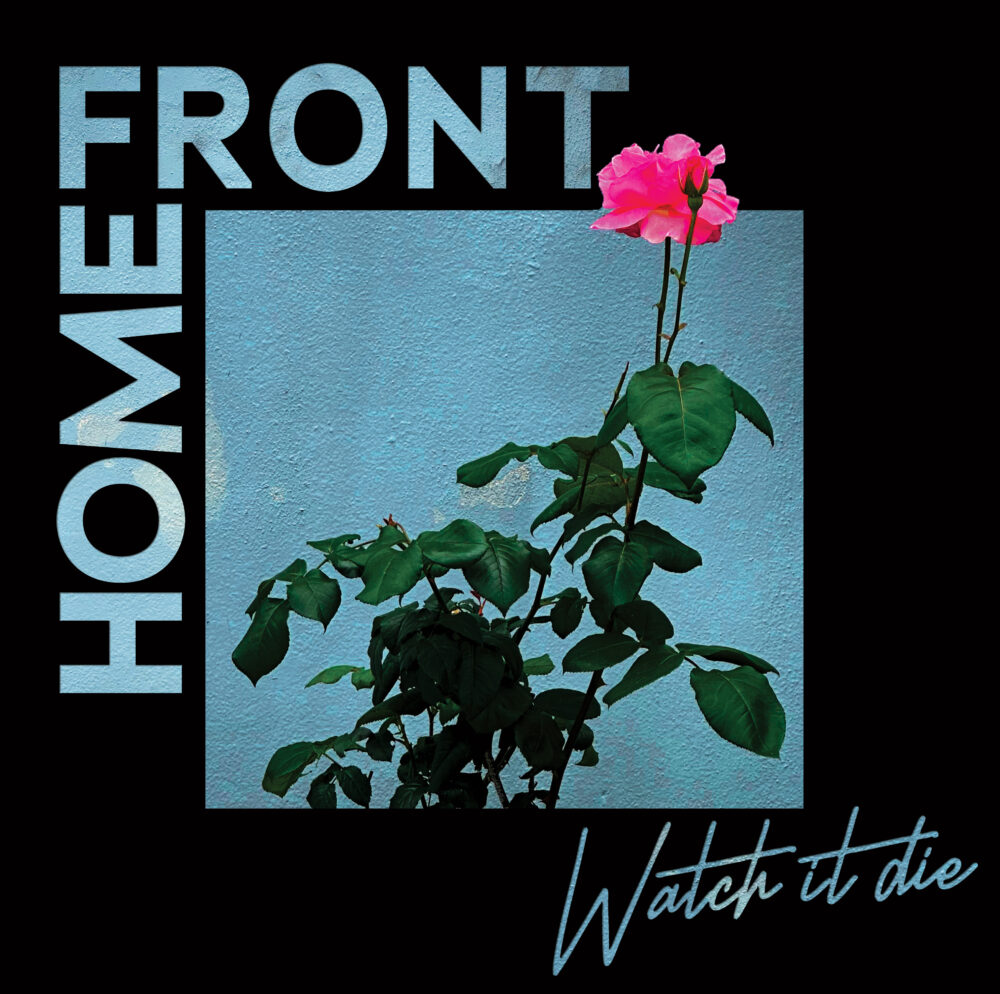A little more than a minute into Kaputt, the first saxophone appears. It's just a little ascending sax run leading into the second verse of "Chinatown" -- nothing extravagant -- but then it's back, riffing and grooving with increasing fervor, as the song approaches its gentle jazz-pop climax. There's more sax on "Blue Eyes," coloring in the margins around Dan Bejar’s bemused references to Beatles songs and long-dead outlaws, before his band goes full lounge-pop during the luxuriating outro of "Suicide Demo For Kara Walker": saxophones, trumpets, and flutes twirling around each other like faded dispatches from a past era. Which, of course, they are.
That inaugural saxophone, performed by Canadian musician Joseph Shabason, feels like the moment where everything changed for Destroyer. Certainly, it’s the moment where Kaputt lets you know it's anything but just another Destroyer album. Not that things were ever business as usual for Dan Bejar, a restless eccentric who had dabbled in strained lo-fi warbling (We'll Build Them A Golden Bridge), glam-pop songcraft (Streethawk: A Seduction), and MIDI orchestration kitsch (Your Blues) before landing his first masterpiece in the form of 2006's elegant, wildly dense Destroyer’s Rubies.
But Kaputt -- released 10 years ago today -- was something different. Bejar demolished preconceived notions of what his band sounded like and encased his stream-of-consciousness witticisms in an irresistibly glossy shell of soft-rock grooves and smooth textures. The production details are radiant. Glistening synths flicker like strobe lights throughout the title track's soft-disco pomp. On "Downtown" and "Song For America," jazzy backing vocalists underline Bejar's vocals as though they were given the night off from Steely Dan tour. Fretless bass licks slither underneath it all with the slightest hint of reverb.
Quiet storm, sophisti-pop, smooth jazz — whatever you want to call this stuff, it wasn't what anyone expected a big-ticket indie album to sound like in 2011. It's more like what you may expect to hear emanating from the candle-lit bungalow of a ponytailed soul DJ in 1983. What makes it work, aside from the band's fluid virtuosity, is that Bejar wholly commits to the bit. Nothing on Kaputt is half-assed, no part executed with a wink or a smirk. The drum sound in "Savage Night At The Opera" has just the right dainty light touch. When "Suicide Demo For Kara Walker" -- a sprawling meditation on race written with the visual artist Kara Walker -- calls for an extended intro, Destroyer whips up a grand overture fit for an Ennio Morricone score (is that a goddamn pan flute??). Plenty of great albums locate profundity within schmaltz, but few of them are as good as Kaputt.
At the center of it all is Bejar himself, a dazed wanderer casting bemused glances at a bohemian culture he no longer recognizes, ambling through cities where "everyone was drowning," shrugging off apocalypses and cocaine-chasers and unnamed musical peers ("I heard your record, it's alright" -- ouch). The songwriting on Kaputt is more rich with imagery than discernible meaning. In press materials, Bejar cited "the hopelessness of the future of music" and "the pointlessness of writing songs for today" as influences on his mind. In 2011, he told Pitchfork he'd largely lost interest in indie-rock as a serious vehicle for lyric-writing -- "I just started blurting things out in a really condensed period of time," he said of Kaputt's process -- and yet the album contains some of his greatest, least-fretted-over lines to date.
At the time, the album's formless writing and sonic textures seemed like a vast departure from Destroyer's previous LPs. In retrospect, Kaputt has its roots in two Destroyer EPs released in 2009 and 2010, respectively: Bay Of Pigs, which featured a slightly extended version of Kaputt's majestic closing track of the same name, and Archer On The Beach, whose title track would be reworked half a decade later for Poison Season.
Some listeners probably interpreted Kaputt's cheese factor as a put-on or an ironic gesture. In reality, the pivot was wholly sincere. "I don't use music for jokes, but as a life or death kind of milieu," Bejar told The Guardian. "I'm old, so I can't really romanticize or go digging through the vaults for exotic sounds, because I grew up with that." (The songwriter also expressed a perverse desire to make music that could inoffensively play in public spaces.)
Substantially older than most indie-rock peers (he was indeed 20 years old in 1992), Bejar drew on the softer sounds of his youth, much of which he’d only embraced years later. "Kaputt was modeled after a certain style of UK mid-'80s production, which maybe in 2011 seemed kind of exotic," the songwriter told me in 2015, when I interviewed him for a Newsweek piece. "I didn’t think of it as soft-rock. I thought of it as the commercial side of new wave music… New Order, the Cure, Echo & The Bunnymen. People like David Sylvian and Talk Talk. That kind of stuff I was thinking about when I made Kaputt -- people who had one foot in ambient music and one foot in pop music and one foot in jazz and one foot in world music."
At the time, critics reviewing Kaputt were more apt to mention early '80s sophisti-pop touchstones, especially of the British variety: Roxy Music's 1982 smash Avalon, Sade's early records. Steely Dan's pair of late '70s-early '80s classics, Aja and Gaucho, both come to mind as well, particularly for their juxtaposition of slick grooves and cynical, debauched lyrics with ample references to recreational drug consumption.
Revisiting Kaputt now, I'm also reminded of Leonard Cohen’s 1988 masterpiece, I'm Your Man. Like Cohen, Bejar was well into middle age when he embraced tacky, synthetic textures more commonly associated with youth, and like Cohen, he began to supplement his own vocal limitations with female backing singers. But, aside from their shared Canadian heritage, what the two songwriters also have in common is that they are sometimes dismissed as dour but can really be quite funny. And Kaputt is funny as hell. Roping a bunch of gospel singers into crooning refrains like "Winter, spring, summer, and fall/ Animals crawl towards death's embrace"? That creamy guitar/saxophone call-and-response in "Song For America"? Come on, that's meant to be funny.
What's also funny about Kaputt is that Bejar accidentally tapped into a nascent trend he didn't know existed. Perhaps he thought he was calling upon the least cool textures imaginable. Instead, "it seemed like Kaputt was part of an accidental zeitgeist that happened around that music," Bejar told me in that Newsweek interview. For one thing, the songwriter started getting asked in interviews about chillwave, which also drew upon vintage, soft-pop aesthetics, albeit in extremely different ways. Then, in mid-2011, The Guardian's Laura Snapes declared Kaputt "the final corner of an indie soft-rock triumvirate," alongside prior albums by Gayngs and Ariel Pink's Haunted Graffiti.
In fact, the Great Saxophone Revival of 2011 was just getting started. Bon Iver's second album, highlighted by soft-as-clay AOR jam "Beth/Rest," arrived in June, and M83's global banger “Midnight City,” with its monstrous sax solo, in August. By the end of 2011, Rolling Stone was heralding "the return of the sax" in a year-end piece, citing those acts alongside other sax-happy tracks by tUnE-yArDs and others.
Within a few short years, Rhye's mysterious debut Woman was borrowing from similar soft R&B tropes as evoked on Kaputt, while the War On Drugs started carrying the banner for a different, more masculine gene of mid-'80s AOR rock. Then, of course, the pop world finally reached peak saxophone on Carly Rae Jepsen's dazzling, shamelessly '80s-cribbing E•MO•TION. That's not to mention the more recent critical rehabilitation (and full-on meme-ification, especially among millennials) of once-uncool bands like Steely Dan and Sade.
Kaputt predicted all this -- well, no, maybe it just stumbled into it, wide-eyed and confused. After touring Kaputt for what seemed like an eternity, Bejar, in typical fashion, abandoned the sound as soon as it became cool, pivoting to a more elegant orchestral-pop grandeur on Poison Season -- an underrated record, and an expensive one, with a larger advance paid for by Kaputt's success.
Ten years later, Kaputt isn't just the consensus pick for Destroyer's best album (though I might still go to bat for Rubies depending on the day). In retrospect, it's the pivot point of the group’s entire career -- the sax-soaked fulcrum that divides Destroyer’s catalog into two distinct eras: Before Kaputt (BK) and After Kaputt (AK). Before Kaputt, you generally had some idea of what a new Destroyer album would sound like before it arrived. Yes, there were some curveballs (hello, Your Blues), but chances were you could reasonably file it under the “indie-rock” tag in your iTunes library. If you wanted to learn the songs on acoustic guitar, you probably could without too much trouble. After Kaputt, none of those things were true. (Can you imagine trying to play "Song For America" at an open mic? You’d need a whole goddamn karaoke track.) After Kaputt, Destroyer feels more like a conceptual pop project than a rock band per se.
And Kaputt perhaps gave Bejar the confidence and swagger to bounce from the refined aesthetic of Poison Season to the downcast synth-pop of 2017's Ken without confusing fans, or to try his hand at something as potentially gaudy as last year's "Cue Synthesizer," with its funky beats and Seinfeld-bass convulsions. Have We Met, the 2020 album that song appeared on, not only managed to synthesize many of the aforementioned styles, but also made Destroyer the only notable indie band to have released a truly great album in the 2000s, the 2010s, and the 2020s. (If you know of another candidate who's achieved this tri-decade hat trick, my DMs are open.)
Destroyer still creates its own distinct world on each new record, and still always sounds like Destroyer. Kaputt is the suavest, sleekest world of them all. It all sounds like a dream to me.






